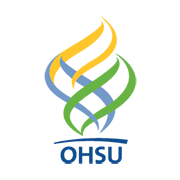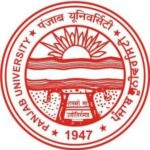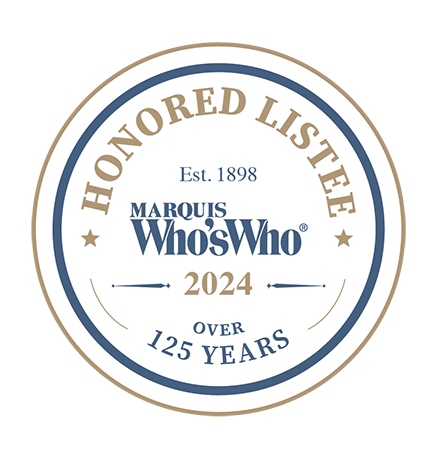Dr. Meenakshi Noll
Education
MD, PhD. (Biochemistry)
Panjab University, India; University of Giessen, Giessen, Germany
Languages: Proficient in English, German, Sanskrit, Prakrit and 4 Indian Languages
Summary

I have been involved in hematopoietic stem cell (HSC) research for over a decade. My expertise includes both viral and non-viral gene therapy for hematopoietic disorders, especially for Fanconi Anemia.
I have generated both knock out and knock in mice to study diseases like FA and arthritis. Before jumping into the field of stem cells and gene therapy, my research focus was pure biochemistry and interaction of proteins in Wilson’s and Menke’s disease. During that time, I identified a novel transcription factor that I named as ZntA. My doctorate thesis was on toxicology of Methyl Isocyanate (MIC), the gas that leaked from the Union Carbide plant in Bhopal, India. This is considered the worst Industrial Disaster in history. I studied the effects of this gas and the carbamates to find the effective therapies to ease the suffering of the victims. I have a good combination of basic research and medicine. I remain interested in providing consults for Stem Cell Research and Therapies involving Stem Cells.
From the past few years, I have transitioned from actual bench research to Medical Writing that has only broadened my area of knowledge and expertise, especially on Science Based Medicine. As a medical writer, I gained ample experience in preparing and submitting regulatory documents, and summarizing the results of clinical trials (Phase II and III). This experience in medical writing led me to establish my own Digital Science Journal: thescrutinizer.org.
CEO (The Scrutinizer, LLC)
 Developed and started a One Stop Information Portal (thescrutinizer.org) dedicated to providing Reliable, Unbiased Science Based Information to alleviate the plethora of misinformation around Health, Nutrition, Diseases and their Treatments. There is an urgent requirement of a trusted source where the scientific data and their interpretation is presented in non-technical format. My mission is to educate the people (globally) in medicine, sports supplements, nutrition and diseases to drastically improve the quality of their life while providing them with critical thinking skills to detect and avoid the false facts and reports.
Developed and started a One Stop Information Portal (thescrutinizer.org) dedicated to providing Reliable, Unbiased Science Based Information to alleviate the plethora of misinformation around Health, Nutrition, Diseases and their Treatments. There is an urgent requirement of a trusted source where the scientific data and their interpretation is presented in non-technical format. My mission is to educate the people (globally) in medicine, sports supplements, nutrition and diseases to drastically improve the quality of their life while providing them with critical thinking skills to detect and avoid the false facts and reports.
Research Experience

Assistant Professor (Research)
Department of Molecular and Medical Genetics, Oregon Health Sciences University
- My research work involved the generation of a knock-in mouse for arthritis and uveitis models using homologous recombination in BAC.
- Naked DNA gene therapy of Hematopoietic Stem Cells. Developed both the ex vivo and in vivo approaches to deliver the naked DNA into murine HSCs using FA knock out mouse model.
- Other projects dealt with studying the dose response of clinically relevant drugs (e.g. Cytoxan, Busulfan and Fludarabine) for selection of donor stem cells in both matched and unmatched bone marrow transplantations.

Senior Research Associate
Department of Molecular and Medical Genetics, Oregon Health Sciences University
- Main research focus was developing protocol for Gene therapy of FA using Retroviral and Lentiviral vectors.
- Initiated and established the studies on the Role of Telomere Length in FA: Generated Fancc-/- mice with short telomeres by back crossing them with the wild derived M. mus castaneous mice. Studied phenotype of the newly generated Fancc-/- mice in the M. mus castaneous background.
- Studies on the interaction of BRCA2 and Rad51 with FA proteins from both the mouse and human samples.

Post-Doctoral Fellow
Department of Molecular and Medical Genetics, Oregon Health Sciences University
- Generation and characterization of Fanca knock out mice and Fanca/Fancc double knock out mice.
- Developed protocols for enrichment of transplanted wild type bone marrow cells in Fanconi Anemia knock out mice followed by different selection regimens like gamma irradiation, Cyclophosphamide, Busulfan and Fludarabine.
- The research resulted in a total of 5 publications in peer-reviewed journals.

Post-Doctoral Fellow
Department of Biochemistry, Oregon Health Sciences University
- Investigated the regulation of heavy metals particularly zinc, cadmium, copper and iron in Proteus mirabilis, which is the second leading cause of urinary tract infections.
- Studied the regulation of hemolysin operon.
- Identified a novel transcription factor from Proteus mirabilis and analyzed its role in zinc homeostasis.
- Studied the expression and translocation of Wilson’s disease protein.
- Performed site directed mutagenesis to insert the mutation (found in the patients) in the ATP binding domain, and conducted the studies on the domain-domain interactions.
- The work resulted in 3 publications in peer-reviewed journals.

Visiting Scientist, Alexander von Humboldt Fellowship
Institut für Kleintierforschung (FAL), Celle, Germany
- Developed the molecular assay methods for detection of S. typhimurium (one of the largest concerns of food poisoning).
- Applied this method to develop assay to screen for Salmonella infected chicken eggs.
- The innovation resulted in the establishment of a novel assay system to detect S. typhimurium from poultry and eggs.
- As a result, this was the only Institute that sold 100% Salmonella Free eggs.

Adjunct Faculty, Rochester Institute of Technology
Department of Chemistry, RIT, Rochester, New York
- Responsibilities included both Teaching and Research.
- Research focus was on synthesis of haloacetamido derivatives of AZT and of 5’-fluorothymidine as potential inhibitors of HIV.
- Worked towards design of Active – Site – Directed Irreversible inhibitors of HIV Reverse Transcriptase.
- Teaching responsibilities included teaching chemistry labs and courses (Physical, Organic and Inorganic) to 3rd-5th year chemistry major students.

Post-Doctoral Fellow, Alexander von Humboldt Stiftung
Institut für Immunologie und Bakteriologie, Giessen, Germany
- Research involved purification and characterization of bacterial (B. subtilis, Staphylococcus sp. and P. aeruginosa) and human monocyte elastases capable of degrading soluble and insoluble elastin.
- Investigated the role of elastases in tissue injury particularly pulmonary diseases using Hela cells.
- Initiated the preparation of Elastase Toxoid and investigated the role of elastase in the degradation of articular tissues in rheumatoid arthritis.

Research Assistant
Department of Microbiology, Panjab University, Chandigarh, India
- Studied the lytic effect of B. subtilis, V. cholerae elastase on Gram Positive and Gram Negative Bacteria.
- Isolated the elastase producing normal microflora from the human cervix, and explored their role in unexplained infertility.
Teaching Experience

Summer Classes at CROET (OHSU)
Oregon Institute of Occupational Health Sciences
- Teaching was focused on Cell Growth, Carcinogenesis, Epigenetic Events, Genetics and Disease.
Mentoring Doctoral Students and Laboratory Technicians
Department of Molecular and Medical Genetics, Oregon Health Sciences University
- I was responsible for the training and supervising of students and technicians.
- Every year mentored two high school Summer Students, one full time technician and a graduate student, along with my own full time research.
- Trained the Science Graduates in research techniques, who were then successfully employed as full time technicians.

Adjunct Faculty
Department of Chemistry, Rochester Institute of Technology (RIT), Rochester, NY
- Courses taught: Biochemistry, Biology and Molecular Biology courses to 3rd-5th year Chemistry and Biochemistry Major Students.
- Teaching the laboratories: Chemistry (Organic/Physical Chemistry) labs to both Chemistry Major and Chemistry Non-Major 3rd-5th year students.
- Course coordinator for the labs as well as theory classes.

Laboratory Instructor
University of Giessen, Germany
- Responsibilities included teaching Microbiology and Molecular Biology Laboratory Courses
Publications
Publications from Department of Molecular and Medical Genetics
- Houghtaling S, Timmers C, Meenakshi Noll, Finegold MJ, Jones SN, Meyn MS and Grompe M, 2003. Epithelial Cancer in Fanconi Anemia Complementation Group D2 (Fancd2) knockout mice. Genes Dev. 17(16):2021-35.
- Montini E, Held PK, Meenakshi Noll, Morcinek N, Al-Dhalimy M, Finegold M, Yant SR, Kay MA and Grompe M, 2002. In Vivo Correction of Murine Tyrosinemia Type I by DNA-Mediated Transposition. Mol. Therapy 6(6):759-769.
- Meenakshi Noll, Galimi F, Kanzagawa Y, Lax TP, Chen CS, Verma I and Grompe M, 2002. Gene Therapy of Fanconi Anemia: Preclinical Efficacy using Lentiviral Vectors. Blood, 100 (8), 2732-2736.
- Meenakshi Noll, Battaile KP, Bateman R, Lax TP, Rathbun K, Reifsteck C, Bagby G, Finegold M, Olson S and Grompe M, 2002. Lack of an additive phenotype in mice mutant in both the Fanconi Anemia group A and C genes. Exp. Hematol, Vol 30, 679-688.
- Meenakshi Noll, Bateman RL, A. D. D’Andrea and M. Grompe, 2001. Preclinical Protocol for in vivo Selection of Hematopoietic Stem Cells Corrected by Gene Therapy in Fanconi Anemia Group C. Molecular Therapy, 3 (1), 14-23.
Publications from Department of Biochemistry and Molecular Biology
- Meenakshi Noll and Lutsenko S, 2000. Expression of ZntA, a Zinc-Transporting P1-Type ATPase, is Specifically Regulated by Zinc and Cadmium. IUBMB Life, 49, 297-302.
- Meenakshi Noll and Lutsenko S,1998. Identification of a 5.5 kb Genomic Segment of Proteus mirabilis that Specifically Increases Resistance to Zinc and Cadmium in E. coli. Proceedings of World Congress on Foodborne Infections and Intoxications, June 7 – 12, Berlin, 755-761.
- Meenakshi Noll and Lutsenko S, 1998. Identification of a Novel Transcription Regulator from Proteus mirabilis, PMTR. Evidence for the Role of PMTR in Zinc Homeostasis. JBC. 273(33), 21393-21401.
Publications from Ph.D. Thesis
- Meenakshi Gupta and Prabha V,1996. Changes in Brain and Plasma Amino Acids of Mice Intoxicated with Methyl Isocyanate. J. Appl. Toxicol.16(6), 475 – 81.
- Prabha V, Meenakshi Gupta and Gupta KG, 1993. Biochemical Characterization of 7 – alpha – hydroxysteroid dehydrogenase from Escherichia coli. Indian Journal of Chemistry Section B – Organic Chemistry. 32 (1) 99 – 100.
- Meenakshi Gupta and Amma MKP, 1993. Membrane Disordering Effect of Thiram as Assessed by Brain Synaptosomal and Erythrocyte Membrane Constituents. Bull. Environ. Contam. Toxicol. 50 (5) 764-771.
- Meenakshi Gupta and Amma MKP, 1992. Hepatotoxicity of Methyl Isocyanate, Carbaryl and Thiram in Mice. J. Appl. Toxicol. 13 (1) 33 – 37.
- Meenakshi Gupta and Amma MKP, 1992. Immunotoxicity of Carbaryl, Thiram and Ziram. Proceedings of World Congress on Food Borne Infections and Intoxications, Berlin, June 16 – 19.
- Meenakshi Gupta and Amma MKP, 1992. Neurotoxicity of Carbaryl and Thiram Pesticides. Proceedings of World Congress on Food Borne Infections and Intoxications, Berlin, June 16 – 19.
- Meenakshi Gupta and Amma MKP, 1992. High Performance Liquid Chromatographic Determination of Free Amino Acids from Carbaryl and Thiram Intoxicated Mice by Pre – Column Derivatization with O –phthaldehyde. J. Liq. Chromat. 15 (12), 2153 – 2163.
- Meenakshi Gupta, Kaur M and Gupta KG, 1992. Lytic Effect of Bacillus subtilis Elastase on Gram Positive and Gram Negative Bacteria. Ind. J. Exp. Biol. 30: 380 – 383.
Other Co-authored Publications
- Prabha V, Meenakshi Gupta and Gupta KG, 1990. Lytic Effect of V. cholerae Elastase on Gram Positive and Negative Bacteria. Folia Microbiologica 35 (3): 183 – 189.
- Prabha V, Meenakshi Gupta and Gupta KG, 1990. Optimization of 7-alpha Hydroxysteroid Dehydrogenase Production by E. coli 0 – 80. Can. J. Microbiol. 36: 725 – 727.
- Prabha V, Meenakshi Gupta and Gupta KG, 1990. Kinetic Properties of 7 – alpha Hydroxysteroid Dehydrogenase from E. coli 0 – 80. Can. J. Microbiol. 35 (12), 1076 – 1080.
- Prabha V, Meenakshi Gupta, Seiffge D and Gupta KG, 1990. Purification of 7 – alpha Hydroxysteroid Dehydrogenase from E. coli 0 – 80. Can. J. Microbiol. 36 (2), 131 – 135.
- Tripathi KK, Meenakshi Gupta, SoLhey J and Gupta KG, 1989. A Review – Bacterial Motility and Chemotaxis in Relation to Adherence and Pathogenicity. Ind. J. Microbiol. 29 (4), 245 – 265.
- Prabha V, Meenakshi Gupta and Gupta KG, 1989. Effect of Temperature on Thin Layer Separation of Bile Acids. Ind. J. Pharmaceutical Sci. 51 (5), 205 – 207.
- Tripathi KK, Kaur M, Meenakshi Gupta and Gupta KG, 1989. Production and Partial Characterization of Elastase of Vibrio cholerae. Zbl. Bakt. Intern. Med. Microbiol. 271: 431 – 441.
- Kaur M, Meenakshi Gupta, Tripathi KK and Gupta KG, 1989. Lytic Effect of Pseudomonas aeruginosa Elastase on Gram Positive and Negative Bacteria. Zbl. Bkt. Int. Med. Microbiol. 271 (2), 153 – 157.
- Kaur M, Tripathi KK, Meenakshi Gupta, P. K. Jain, M. R. Bansal and K.G. Gupta, 1988. Production and Partial Characterization of Elastase of Bacillus subtilis. Canadian J. Microbiol. 34: 855 – 859.
Academic Awards and Honors
- Dickinson Foundation Grant (DFG) to work on Pediatric Diseases
- Tartar Fellowship, OHSU
- Alexander von Humboldt Fellowship, Germany
- Government of India Research Grant for Doctoral Students
- Indian Council of Medical Research Grant for Doctoral Students
- Research Scholarship for Masters in Science
- Travel Awards from Alexander von Humboldt Organization
- Travel Awards for presenting at the Scientific Conferences
- Graduated with Honors in top 5 students in B.S. and M.S. (Biochemistry)
Other Honors and Invitations
- Invited by Fanconi Anemia Research Fund (FARF) to go to Irvine, CA to present and recruit researchers interested in FA research
- Invited to be a judge at the INTEL ISEF Science Fair, Portland/OR
- Served as a judge on Graduate Student Research Forum during the oral presentation sessions
- Recognized by the President of the University (Dr. Peter Kohler) for
- (a) research work on non-viral gene therapy
- (b) mentoring the High School Students and participating at the Science Fairs
- Invited to Meet with the Nobel Prize Winners of Medicine. Lindau, Germany. Received ‘Alexander von Humboldt’ Travel Award
- Invited to be a judge at Young Entrepreneurs Business Week (YEBW)
- Received ‘Working Mother of the Year Award’ NY, NY
- Selected to be an Honored Member of Biltmore Who’s Who
- Selected to be Featured Member of Biltmore Who’s Who
- Invited to speak on:
- Ash Radio as an expert on Genetics
- Women’s Network Radio Show
- UK based Radio Show
- Drive Time
- Invited to speak on Gene Therapy in Virtual Classroom by Nepris
Scientific Societies Memberships
- American Society of Gene Therapy (ASGT)
- American Society of Human Genetics (ASHG)
- International Union of Biochemistry (IUB)
- Federation of Asian and Oceanic Biochemists and Microbiologists (FAOBM)
Volunteering
- Teaching Genetics to Virtual Classroom (STEM/STEAM Education) via Nepris Inc.
- Judge at YEBW (Young Entrepreneurs Business Week): Helping students with their business plans
- Judge at the INTEL ISEF (Science Fair)
- Courageous Beginning: I’m part of the organization established in Portland, OR to help the girls rescued from human trafficking rings.
- Fostering dogs and cats
- OFASA
- Oregon Humane Society
Invited Lectures
- Transposon Mediated Hematopoietic Stem Cell Gene Therapy for Fanconi Anemia: A realistic hope?
FARF Symposium, October 2004, Cambridge, MA - In Vivo Correction of Fancc Mutant Hematopoietic Stem Cells by DNA-Mediated Transposition.
2004. Beckman Center, University of Minnesota. Minneapolis, MN - Fanconi Anemia: Old Problem, New Insights into Therapy.
2004 Texas Children’s Hospital, Houstan, Texas - Gene therapy of Fanconi Anemia using Lentiviral Vectors.
10th Annual International Symposium on recent Advances in Stem Cell Transplantation, April 25-27, 2002, Heidelberg, Germany - Gene Therapy of Hematopoietic Stem Cells.
Seventh Meeting of the European Society of Gene Therapy, November 26-28, 1999, Munich, Germany - Toxicity of Carbaryl and Thiram Pesticides as assessed by changes in ATPases of Erythrocytes
4th World Congress on Foodborne Infections and Intoxications, June 7 – 12, 1998, Berlin, Germany - Possible Role of PMTR (Proteus Mirabilis Transcription Regulator) in Balancing Zinc in E. coli
4th World Congress on Foodborne Infections and Intoxications, June 7 – 12, 1998, Berlin, Germany
Presentations at Conferences
- Gene therapy of Fanconi Anemia groups A and C by Lentiviral Vectors using mouse as an experimental model: Comparison with retroviral vectors.
FA Scientific Symposium, 2001, Portland, OR - A Survey of clinically relevant drugs in Fanconi Anemia.
15th Annual International Fanconi Anemia Scientific Symposium, October 16-19, 2003, Houstan, Texas - Generation of Fanca/Fancc double knock out mouse model for functional studies in Fanconi Anemia.
51st Annual Meeting. Society of Human Genetics, 11-14 October, 2001, San Diego, CA - Cyclophosphamide Mediated Selection of HSCs Corrected by Gene Therapy in a Model of FA.
49th Annual Meeting of Society of Human Genetics, October 19-23, 1999, San Francisco, CA - Mice doubly mutant in the Fanconi Anemia group A and C genes are viable, but display more severe sensitivity to DNA cross linkers than either mutant alone.
50th Annual Meeting of Society of Human Genetics, October 3-7, 2000, Philadelphia, PA - Development of Pre-Clinical protocol for in-vivo selection in Fanconi Anemia Gene Therapy.
American Society of Gene Therapy, May 2000, Denver, CO, - Zn-Dependent Proteolytic Cleavage of F188 Gene Product is Associated with an Increase in Zn-Resistance in Bacteria
41st Annual Meeting, March 2-6, 1997, New Orleans, Louisiana - 8th International Congress of Bacteriology and Applied Microbiology Division
August 18 – 23, 1996, Jerusalem, Israel - *First Conference on Biological and Clinical Aspects of Thymic Epithelial Tumors
April 14th – 18th, 1996, Wurzburg, Germany - In Vivo Effect of Methyl Isocyanate on GABA System and Brain Free Amino Acids of Mice
7th FAOB Congress, September 24 – 29, Sydney, Australia - Biological and Abiological Transformation of Bile Salts.
12th International Symposium of Steroid Biochemistry and Molecular Biology’, May 21 – 24, Berlin, Germany - Biochemical Alterations in Brain Synaptosomes of Mice Intoxicated with MIC
16th International Congress of Biochemistry and Molecular Biology, September 19 – 22, 1994, New Delhi, India - *Neurotoxicity of MIC as Assessed by Changes in Mice Brain Synaptosomal Membrane Fluidity
6th FAOB Congress, November 16 – 21, 1992, Shanghai, China - *Inactivation of Spermatozoal ATPase Activity by Bacterial Proteases with Particular Reference to Elastase
2nd International Conference on Advances in Reproductive Research in Man and Animals, Organized by NCRR, Nairobi, Kenya - Biochemical Characterization of 7 alpha – Hydroxy Steroid Dehydrogenase from E. coli, Capable of Transforming Cholic Acid
IUPAC-NOST International Symposium on Enzymes in Organic Synthesis, January 6 – 9, 1992, New Delhi, India - Mutagenicity/Carcinogenicity of MIC, Carbamates and Thiocarbamates
XVII Annual Conference on Environmental Mutagens and Carcinogens, March 10 – 12, 1992, Poona, India - Effect of MIC on GABA System of Mice Brain
2nd International Congress of Toxicity in Developing Countries, November 24 – 28, 1991, New Delhi, India - Lytic Effect of Elastase from P. aeruginosa, B. subtilis and V. cholera on Gram Positive and Gram Negative bacteria
XXIX Annual Conference of Association of Microbiologists of India, February 9 – 11, 1991, Hissar, India - *Neurotoxicity, Immunotoxicity and Mutagenicity of MIC, Carbaryl and Thiram
1st International Conference on Environmental Mutagenesis in Human Population at Risk, 1991, Cairo, Egypt - Adsorbtion of Antibiotic on Bacteria and Tissues and Potential of Antimicrobial Activity of Antibiotics in the presence of Cholic Acid
17th International Congress of Chemotherapy. June 23 – 28, 1991, Berlin, Germany - *Kinetic Studies on the effect of MIC, Carbamate and Thiocarbamte on Brain Synaptosomes and RBC Membranes
3rd International Congress of Comparative Physiology and Biochemistry. August 25 – 30, 1991, Tokyo, Japan - *Neurotoxicity of MIC, Carbamate and Thiocarbomate
15th International Congress of Biochemistry. August 25 – 30, 1991, Jerusalem, Israel - Amino Acid Analysis of MIC and Carbamates treated Brain and Plasma of Mice by HPLC
1st International Symposium on HPLC in Enzyme Chemistry’. September 10 – 14, 1990, Verona, Italy - *Studies on the Chemotaxis and Adhesion of V. cholerae and S. typhi to Brush Borders from llea of Animals
IUMS Congress of Bacteriology and Mycology. September 16 – 22, 1990, Osaka, Japan - *Received young scientists travel fellowship for attending the conference.
